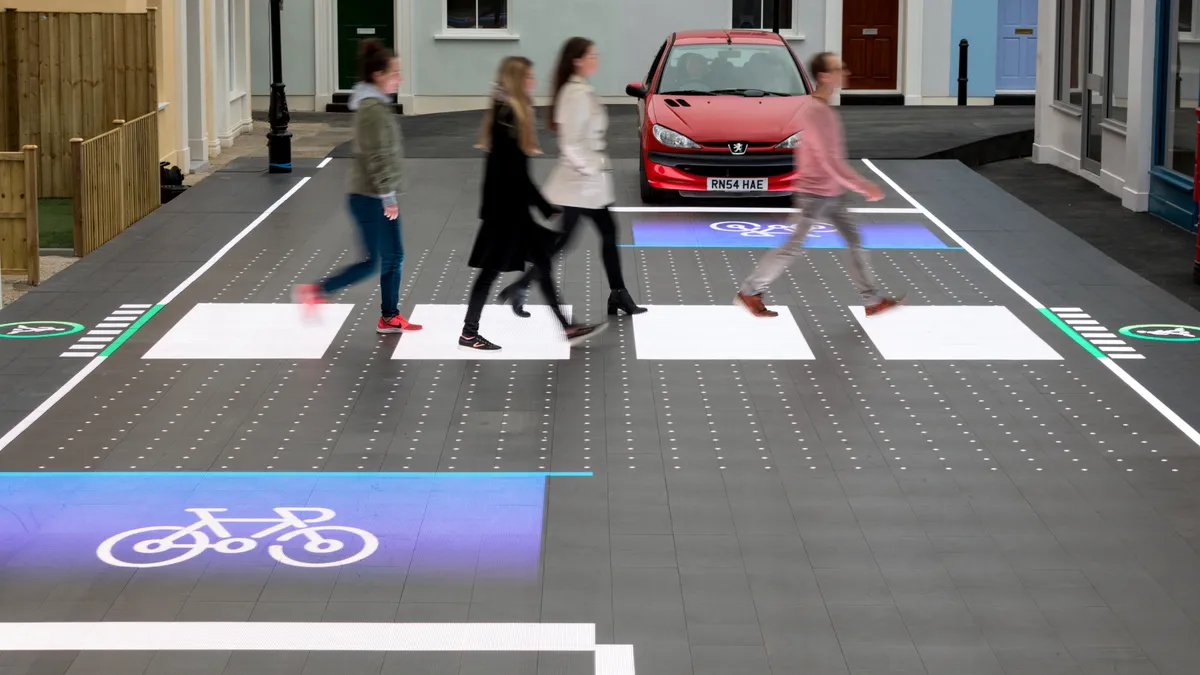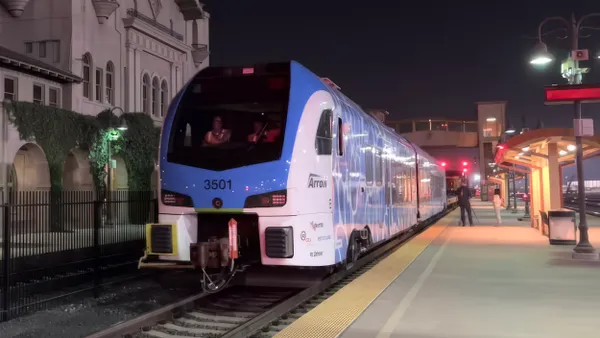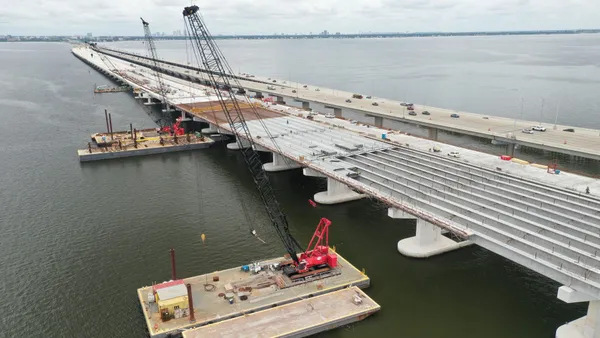Dive Brief:
- A "smart crossing" prototype that uses cameras, sensors, computer programming and a large LED screen installed in the ground — dubbed "Starling Crossing" — has been revealed in London, according to Wired and others.
- The crosswalk improves safety by adjusting its road markings in real-time, in response to the presence of vehicles, pedestrians and cyclists. A visible crosswalk doesn't appear until a pedestrian stands near it and it's safe to walk. Markings disappear once everyone has crossed.
- The technology tracks and anticipates movements, while learning over time so it can better and more quickly process information and respond to changing stimuli.
Dive Insight:
While the system is high-tech and connected, wide-spread installation may not happen as rapidly as simply painting a crosswalk on the street. The system is installed in a steel substructure underground so it doesn't warp or break apart when vehicles travel over it. The LEDs are covered with slip-free, high-impact plastic to prevent water damage and support the weight of vehicles. Cameras and sensors send information to the computer, which then generates the appropriate LED patterns or warnings to guide pedestrians. If a large group of people crosses the street, for example, the crosswalk will widen so nobody walks too close to traffic. In that situation the LEDs will also push back the line where cars should stop to accommodate the extra walkers.
The LEDs have other safety benefits as well, including the ability to respond to commands in less than one-hundredth of a second. That's designed to be fast enough to react to a child running into the street, but not too fast as to startle or distract people. The LEDs are also bright enough to grab the attention of pedestrians who might be distracted by a smartphone and boost their awareness in potentially dangerous situations, both in daylight and in the dark.
The Starling system has the potential to significantly improve safety and reduce pedestrian-vehicle collisions, which the U.S. Centers for Disease Control and Prevention blamed for nearly 5,400 pedestrian deaths in 2015, and an additional 129,000 non-fatal injuries. These benefits of the crosswalk can even help cities reach Vision Zero, a global goal to end traffic fatalities. The goal pushes participating cities to achieve Vision Zero by 2020, which could actually be possible if high-tech solutions such as the smart crosswalk prove to be successful in the prototype stage.
Designers are testing the mock-up on a fake street at a London film studio, with a device that measures about 25 feet by 72 feet. The prototype developers still have to work out some bugs and incorporate system backups before the device can be installed on a real street.











